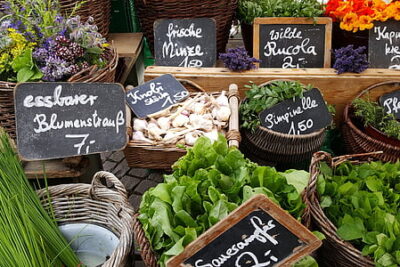
Top Hanging Succulents: Discover Which Thrive as Hanging Strings
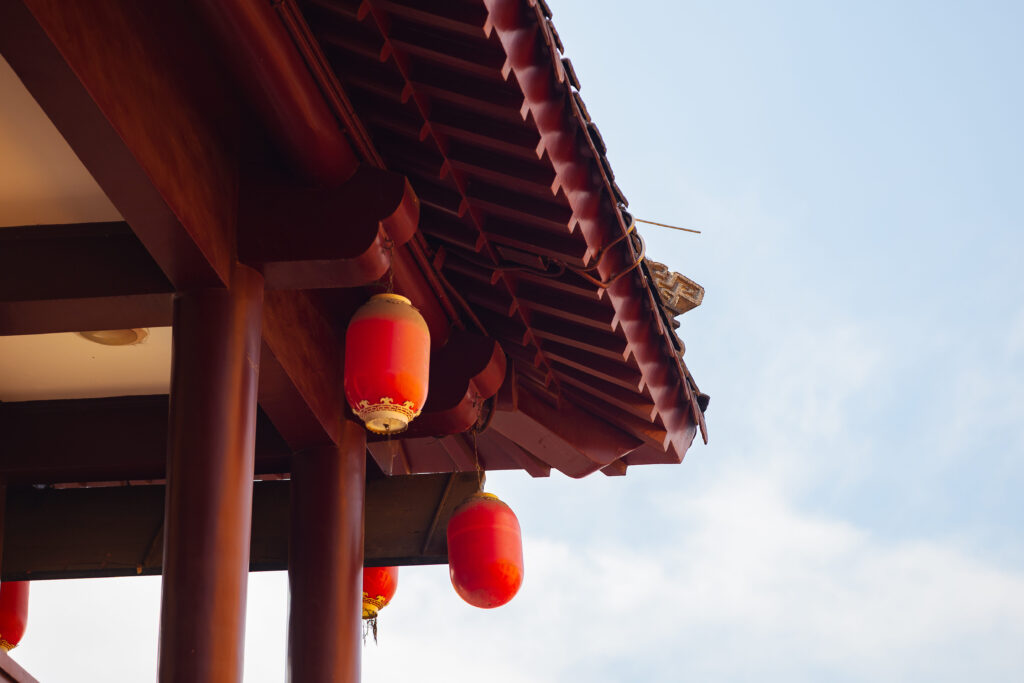
Succulents have gained immense popularity in recent years, thanks to their unique and striking appearance, as well as their low maintenance requirements. These plants are known for their ability to store water in their leaves, making them highly adaptable to different environments. While most succulents are typically grown in pots or containers, there is a growing trend of using hanging succulents to add a touch of greenery and elegance to indoor and outdoor spaces.
We will explore the world of hanging succulents and discover which varieties thrive when suspended in strings or baskets. We will discuss the unique characteristics of these plants that make them suitable for hanging, such as their trailing or cascading growth habit, and their ability to tolerate limited soil space. Additionally, we will provide tips and guidelines for caring for hanging succulents, including appropriate watering, light requirements, and propagation techniques. Whether you are a seasoned succulent enthusiast or a beginner looking to incorporate these beautiful plants into your space, this article will provide you with all the information you need to successfully grow and maintain hanging succulents.
- Spider plants are a great option for hanging succulents
- String of pearls is a popular choice for hanging succulents
- Donkey's tail is a beautiful hanging succulent
- String of bananas is a unique hanging succulent
- Burro's tail is another great succulent for hanging
- Fishbone cactus is an interesting hanging succulent
- String of hearts is a delicate and charming hanging succulent
- Lipstick plant is a colorful choice for hanging succulents
- String of dolphins is a fascinating hanging succulent
- String of turtles is an eye-catching hanging succulent
- Spider plants are a great option for hanging succulents because of their long, cascading leaves
- String of pearls is a popular choice for hanging succulents due to its unique round leaves
- Donkey's tail is a beautiful hanging succulent with trailing stems full of small, delicate leaves
- String of bananas is a unique hanging succulent that resembles tiny bananas cascading down the stems
- Burro's tail is another great succulent for hanging, with its long trailing stems covered in plump, tear-drop shaped leaves
- Burro's Tail: A Hanging Delight for Succulent Lovers
- Fishbone cactus is an interesting hanging succulent with its zigzag-shaped stems and long, narrow leaves
- String of hearts is a delicate and charming hanging succulent with heart-shaped leaves cascading down the stems
- Lipstick plant is a colorful choice for hanging succulents, with its vibrant red flowers and glossy green leaves
- String of dolphins is a fascinating hanging succulent that features leaves that resemble leaping dolphins
- String of turtles is an eye-catching hanging succulent with leaves that look like tiny turtles
- Frequently Asked Questions
Spider plants are a great option for hanging succulents
If you're looking for a beautiful and low-maintenance hanging succulent, look no further than the Spider Plant (Chlorophytum comosum). With its long, arching leaves that resemble spider legs, this plant adds a touch of elegance to any space. Its cascading growth habit makes it a perfect choice for hanging baskets or macrame plant hangers.
Spider plants are known for their air-purifying properties, making them not only a visually appealing choice but also a health-conscious one. They are excellent at removing toxins like formaldehyde and xylene from the air, creating a healthier indoor environment.
When it comes to care, Spider plants are fairly easy to maintain. They thrive in bright, indirect light but can tolerate lower light conditions as well. It's important to let the soil dry out between waterings to prevent root rot. Spider plants are also known for their ability to produce "spiderettes," small offshoots that hang down from the parent plant. These spiderettes can be easily propagated and used to grow new plants.
Overall, Spider plants are a versatile and resilient hanging succulent option that can brighten up any space while also improving air quality.
 Explore Mountain Crest Gardens' Collection for Stunning Succulents
Explore Mountain Crest Gardens' Collection for Stunning SucculentsString of pearls is a popular choice for hanging succulents
When it comes to hanging succulents, one of the most popular choices is the String of Pearls. This unique succulent features long, trailing stems adorned with small, round leaves that resemble pearls. Its cascading growth habit makes it a perfect choice for hanging baskets or macrame planters.
The String of Pearls is native to the arid regions of South Africa and is known for its ability to thrive in dry conditions. Its leaves are adapted to store water, allowing it to withstand periods of drought. This makes it a low-maintenance plant that is perfect for busy individuals or those new to succulent care.
When growing the String of Pearls as a hanging plant, it's important to provide it with the right conditions. This succulent thrives in bright, indirect sunlight, so make sure to place it near a window where it can receive plenty of light. Avoid placing it in direct sunlight as this can cause the leaves to burn.
In terms of watering, the String of Pearls prefers to dry out between waterings. Overwatering can lead to root rot, so it's important to let the soil dry out before watering again. As with most succulents, it's better to underwater than overwater.
Another popular hanging succulent is the String of Hearts. Also known as Ceropegia woodii, this succulent is characterized by its delicate, heart-shaped leaves that grow on long, trailing vines. The leaves range in color from green to purple, adding a touch of elegance to any hanging display.
The String of Hearts is native to South Africa and is well-suited for hanging baskets or tall planters. It prefers bright, indirect light but can tolerate some shade. Like the String of Pearls, it is drought-tolerant and should be watered sparingly. Overwatering can lead to root rot, so make sure to allow the soil to dry out between waterings.
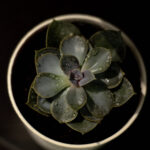 Best Deals on Bulk Succulents: Your One-Stop Shop
Best Deals on Bulk Succulents: Your One-Stop ShopIf you're looking for a hanging succulent with a unique appearance, consider the String of Bananas. This succulent, also known as Senecio radicans, features long, cascading stems adorned with small, banana-shaped leaves. Its trailing growth habit makes it a great choice for hanging baskets or living walls.
The String of Bananas is native to South Africa and is a relatively easy succulent to care for. It prefers bright, indirect light but can tolerate some shade. As with other hanging succulents, it's important to let the soil dry out between waterings to prevent overwatering.
Whether you choose the String of Pearls, String of Hearts, or String of Bananas, hanging succulents can add a touch of beauty and uniqueness to any space. Their cascading growth habits and low-maintenance care requirements make them perfect for both beginner and experienced plant enthusiasts.
Donkey's tail is a beautiful hanging succulent
Donkey's tail, scientifically known as Sedum Morganianum, is a stunning hanging succulent that will add a touch of elegance to any space. This trailing succulent features long, cascading stems covered in plump, tear-shaped leaves. The leaves are a striking shade of blue-green, which intensifies when exposed to bright sunlight.
One of the reasons why donkey's tail is a popular choice for hanging planters is its low-maintenance nature. It thrives in both indoor and outdoor environments, making it a versatile choice for any plant lover. This succulent is also known for its ability to withstand periods of drought, making it an excellent option for those who have a tendency to forget to water their plants regularly.
When it comes to caring for donkey's tail, it is important to provide it with well-draining soil to prevent root rot. This succulent prefers bright, indirect sunlight but can tolerate some direct sun exposure. However, be cautious of intense, scorching sunlight, as it can cause sunburn on the leaves.
 Perfect Plant Partners: Best Succulents for Snake Plants
Perfect Plant Partners: Best Succulents for Snake PlantsDonkey's tail is a slow-growing succulent, but with patience, it will create a stunning display as it grows longer and fuller. It is an ideal choice for hanging baskets, where its trailing stems can cascade down and create a visually striking effect.
Propagation of donkey's tail is relatively simple. You can propagate it by taking stem cuttings and allowing them to callus before planting them in well-draining soil. With proper care and attention, you can easily expand your donkey's tail collection.
Overall, donkey's tail is a captivating hanging succulent that will make a statement in any space. Its unique appearance, low-maintenance nature, and ease of propagation make it a top choice for both beginner and experienced succulent enthusiasts.
String of bananas is a unique hanging succulent
The String of Bananas is a unique and captivating hanging succulent that will add a touch of whimsy to any space. This succulent gets its name from its long, trailing stems that resemble strings of bananas. With its vibrant green foliage and cascading growth habit, the String of Bananas is an eye-catching addition to any hanging planter or basket.
Characteristics:
- The String of Bananas (Senecio radicans) belongs to the Asteraceae family.
- It is native to South Africa and thrives in warm, arid climates.
- The succulent features slender, banana-shaped leaves that grow in pairs along the stems.
- It produces small, white or purple flowers that bloom in the spring and summer.
- The trailing stems can grow up to 3 feet long, making it an excellent choice for hanging baskets or tall planters.
Care Tips:
 Where to Find Top-Quality Terracotta Pots for Succulents
Where to Find Top-Quality Terracotta Pots for Succulents- Light: The String of Bananas thrives in bright, indirect light. Place it near a window where it can receive a few hours of morning or evening sunlight.
- Water: This succulent prefers to dry out between waterings. Allow the soil to completely dry before watering, as overwatering can lead to root rot.
- Temperature: It prefers temperatures between 65-75°F (18-24°C) during the day and slightly cooler temperatures at night.
- Soil: Plant the String of Bananas in well-draining soil, preferably a succulent or cactus mix.
- Fertilizer: Feed the succulent with a balanced, water-soluble fertilizer diluted to half strength during the growing season (spring and summer).
With its unique appearance and easy care requirements, the String of Bananas is a top choice for anyone looking to add a touch of greenery to their hanging plant collection. Whether you hang it in a sunny window or display it outdoors in a shaded patio, this hanging succulent is sure to thrive and delight.
Burro's tail is another great succulent for hanging
Burro's tail, also known as Sedum morganianum, is an excellent choice for those looking to add a unique touch to their hanging succulent collection. With its cascading stems and plump, fleshy leaves, this succulent is sure to catch anyone's attention.
Native to Mexico, Burro's tail is well-known for its ability to withstand drought-like conditions, making it a low-maintenance plant that is perfect for busy individuals. Its leaves, which resemble tiny beans or donkey tails, store water, allowing the plant to survive in arid environments.
When grown in hanging baskets or containers, Burro's tail creates a stunning display as its stems spill over the sides, creating an elegant and eye-catching look. Its leaves vary in color, ranging from light blue-green to silver-gray, adding visual interest to any space.
To ensure that your Burro's tail thrives as a hanging string, it's important to provide it with the right care. Here are some tips:
- Light: Place your Burro's tail in a bright location with indirect sunlight. Avoid exposing it to intense, direct sunlight as it can cause sunburn on its leaves.
- Water: Water your Burro's tail sparingly, allowing the soil to dry out between waterings. Overwatering can lead to root rot, so it's better to underwater than overwater this succulent.
- Soil: Use well-draining soil specifically formulated for succulents. This will prevent water from accumulating around the roots, reducing the risk of rot.
- Temperature: Burro's tail prefers moderate temperatures ranging from 60°F to 75°F (15°C to 24°C). Avoid exposing it to extreme cold or hot conditions.
With proper care, your Burro's tail will flourish as a hanging string and become a focal point in your succulent collection. Its unique appearance and ability to thrive in less than ideal conditions make it a popular choice among succulent enthusiasts.
 Is My Succulent Outgrowing Its Pot?
Is My Succulent Outgrowing Its Pot?Fishbone cactus is an interesting hanging succulent
One fascinating hanging succulent to consider is the Fishbone cactus. Known for its unique and intricate foliage, the Fishbone cactus (Epiphyllum anguliger) is a stunning addition to any indoor or outdoor space.
The name "Fishbone cactus" perfectly describes the appearance of its leaves, which resemble the bony structure of a fish skeleton. This distinctive feature sets it apart from other hanging succulents, making it a sought-after plant among succulent enthusiasts.
The Fishbone cactus is native to the tropical regions of Mexico. It thrives in warm and humid conditions, making it an ideal choice for those living in tropical or subtropical climates. However, with proper care, it can also adapt well to other environments.
When it comes to caring for the Fishbone cactus, it is relatively low-maintenance. This succulent prefers bright, filtered light, so placing it near a window with indirect sunlight is recommended. Overexposure to direct sunlight can cause the leaves to burn.
In terms of watering, the Fishbone cactus prefers a well-draining soil mix. It is crucial to allow the soil to dry out between waterings to prevent root rot. During the growing season, watering once a week is typically sufficient, while reducing the frequency during winter when the plant goes into a dormant phase.
As for propagation, the Fishbone cactus can be easily propagated through stem cuttings. Simply cut a healthy stem segment and allow it to callous over for a few days before planting it in well-draining soil. With proper care and ideal conditions, roots will develop, and a new plant will emerge.
The Fishbone cactus is not only visually appealing but also has air-purifying properties, making it a beneficial addition to your indoor space. Its unique foliage and low-maintenance nature make it an excellent choice for hanging baskets, where its cascading stems can create an eye-catching display.
 Discover Amazing Deals on Succulents: Find the Best Prices Today!
Discover Amazing Deals on Succulents: Find the Best Prices Today!The Fishbone cactus is an intriguing hanging succulent that adds a touch of uniqueness to any space. With its fishbone-like foliage, easy care requirements, and air-purifying qualities, it is definitely a top choice for those looking to elevate their hanging succulent collection.
String of hearts is a delicate and charming hanging succulent
The string of hearts is a delicate and charming hanging succulent that can bring a touch of whimsy to any space. With its long, trailing vines adorned with heart-shaped leaves, this succulent is a favorite among plant enthusiasts.
Known scientifically as Ceropegia woodii, this succulent is native to South Africa. It has become widely popular due to its unique trailing growth habit and its ability to thrive in hanging baskets or pots. The string of hearts can also be grown as a trailing plant, cascading down from shelves or bookcases, adding a beautiful vertical element to any room.
The leaves of the string of hearts are what make it so special. They are shaped like miniature hearts, hence the name, and have a beautiful variegation of green and silver. The leaves are succulent, meaning they store water, which allows the plant to withstand periods of drought. This makes it a low-maintenance plant, perfect for those who may not have a green thumb.
When it comes to care, the string of hearts prefers bright, indirect light. It can tolerate some direct sunlight, but too much can scorch the leaves. It is essential to provide well-draining soil and allow the top inch of soil to dry out before watering. Overwatering can lead to root rot, so it's important to strike a balance.
The string of hearts is a relatively fast-growing succulent, and with proper care, it can produce small, tubular flowers. The flowers are typically pink or purple and have a unique shape, resembling little lanterns. These flowers have a pleasant fragrance that attracts pollinators like bees and butterflies.
Overall, the string of hearts is a versatile and visually appealing hanging succulent that can bring a touch of elegance to any space. Its delicate vines and heart-shaped leaves make it a favorite choice for hanging baskets and trailing plant arrangements. So, if you're looking to add a unique and charming succulent to your collection, the string of hearts is definitely worth considering.
 Succulent Care Guide: Green up Your Space with Terracotta Pots
Succulent Care Guide: Green up Your Space with Terracotta PotsLipstick plant is a colorful choice for hanging succulents
If you're looking to add a splash of color and vibrancy to your hanging succulent collection, the lipstick plant is an excellent choice. Known for its striking red, tube-like flowers, the lipstick plant (Aeschynanthus radicans) is a popular choice among succulent enthusiasts.
The lipstick plant features trailing vines with glossy, dark green leaves that provide a beautiful backdrop for its vibrant flowers. These flowers, shaped like tubes or lipstick tubes, can vary in color from bright red to orange, and even yellow.
In addition to its stunning appearance, the lipstick plant is relatively easy to care for. It thrives in bright, indirect light, making it a great option for hanging baskets near windows or in well-lit rooms. It prefers well-draining soil and should be watered when the top inch of soil feels dry. However, be careful not to overwater as it can lead to root rot.
To ensure healthy growth, it's recommended to fertilize the lipstick plant every two weeks during the growing season, using a balanced liquid fertilizer. Pruning can also help maintain its shape and promote bushier growth.
Overall, the lipstick plant is a stunning choice for those looking to add a pop of color to their hanging succulent collection. Its vibrant flowers and easy care requirements make it a favorite among both beginners and experienced plant lovers.
String of dolphins is a fascinating hanging succulent
 Succulent Gift Ideas: Unique Birthday Surprises
Succulent Gift Ideas: Unique Birthday SurprisesString of dolphins (Senecio peregrinus) is a captivating hanging succulent that is sure to grab attention in any indoor or outdoor space. This unique plant gets its name from the way its leaves resemble leaping dolphins.
Native to South Africa, string of dolphins is a member of the Asteraceae family. Its trailing stems can grow up to 2 feet long, making it an ideal choice for hanging baskets, window boxes, or cascading from elevated planters.
The leaves of the string of dolphins are fleshy and shaped like miniature dolphins, with a bluish-green color and distinct markings that mimic the appearance of dolphins' skin. These leaves grow in pairs along the stems, creating a striking visual effect.
When it comes to care, string of dolphins prefers bright, indirect light. It thrives in well-draining soil and requires infrequent watering, as overwatering can lead to root rot. Allow the soil to dry out between waterings, and be cautious not to let the plant sit in standing water.
String of dolphins is a relatively low-maintenance succulent, making it a great choice for beginners or those with a busy lifestyle. It is also a great addition to hanging gardens or as a trailing accent in plant arrangements.
To propagate string of dolphins, simply take stem cuttings and allow them to dry for a few days. Once calloused, place the cuttings in well-draining soil and mist them lightly until roots develop.
Overall, string of dolphins is an enchanting hanging succulent that adds a touch of whimsy and elegance to any space. Its unique leaf shape and trailing growth habit make it a standout choice for succulent enthusiasts and plant lovers alike.
 Can Cacti and Succulents Thrive Together in a Mixed Planting?
Can Cacti and Succulents Thrive Together in a Mixed Planting?String of turtles is an eye-catching hanging succulent
The String of Turtles (Peperomia prostrata) is a mesmerizing hanging succulent that will effortlessly add a touch of elegance to any space. Its unique trailing habit, resembling a cascading vine, makes it a popular choice for those looking to create stunning vertical gardens or hanging planters.
One of the most striking features of the String of Turtles is its succulent leaves, which are shaped like tiny turtles. These leaves are a rich green color, adorned with intricate patterns resembling the markings on a turtle's shell. This distinct visual characteristic is what makes this succulent truly stand out from the rest.
When it comes to caring for the String of Turtles, it thrives in bright, indirect light, making it an excellent choice for hanging near windows or in well-lit areas. It prefers well-draining soil and requires watering only when the top inch of soil feels dry. Overwatering can be detrimental to this succulent, so it's important to strike a balance with its watering needs.
This hanging succulent is relatively low-maintenance, making it a great choice for both beginner and experienced plant enthusiasts. It can tolerate a variety of indoor conditions and is known for its resilience and ability to adapt to different environments.
If you're looking to add a touch of whimsy and charm to your living space, the String of Turtles is the perfect choice. Its trailing vines and unique leaf shape will create a captivating display, whether it's placed in a hanging planter or allowed to drape gracefully from a shelf or mantel.
With its stunning visual appeal and easy care requirements, the String of Turtles is undoubtedly one of the top hanging succulents to consider for your indoor garden.
 Discover the Top Locations for Buying Succulents Near Me
Discover the Top Locations for Buying Succulents Near MeSpider plants are a great option for hanging succulents because of their long, cascading leaves
Spider plants (Chlorophytum comosum) are a popular choice when it comes to hanging succulents. Their long, cascading leaves make them a visually appealing addition to any space. These plants are known for their ability to tolerate various light conditions, making them an ideal choice for both indoor and outdoor hanging baskets.
One of the key features of spider plants is their ability to produce offshoots, commonly known as "spiderettes," which hang down from the main plant. These spiderettes can be left to grow, creating a beautiful, lush display of foliage. Alternatively, they can be easily propagated by cutting and placed in water or soil, allowing you to expand your collection of hanging succulents.
Spider plants thrive in well-draining soil and prefer bright, indirect light. While they can tolerate lower light conditions, their growth may be slower. These plants are also quite forgiving when it comes to watering; they can tolerate occasional drying out between waterings. However, overwatering should be avoided as it can lead to root rot.
Another popular hanging succulent is the String of Pearls (Senecio rowleyanus). This unique plant features long, trailing stems adorned with small, spherical leaves that resemble strings of pearls. Its delicate appearance adds a touch of elegance to any hanging arrangement.
String of Pearls plants are drought-tolerant and prefer bright, indirect light. They are native to arid regions, so they can withstand dry conditions and do well in well-draining soil. It's important to avoid overwatering this succulent, as excessive moisture can cause root rot.
If you're looking for a hanging succulent with a trailing habit and vibrant colors, the Burro's Tail (Sedum morganianum) is an excellent choice. This succulent is characterized by its plump, trailing stems covered in fleshy, blue-green leaves.
The Burro's Tail is a drought-tolerant plant that prefers bright, indirect light. It is important to note that this succulent is sensitive to overwatering, so it's best to let the soil dry out between waterings. Over time, the Burro's Tail can grow quite long, making it a stunning addition to hanging baskets or macrame plant hangers.
String of pearls is a popular choice for hanging succulents due to its unique round leaves
The string of pearls (Senecio rowleyanus) is a popular choice for hanging succulents due to its unique round leaves. This trailing succulent is native to South Africa and is commonly grown as a houseplant or in hanging baskets.
One of the main attractions of the string of pearls is its distinctive appearance. Its leaves are shaped like small, spherical beads, hence the name "string of pearls." These beads are green and often have a glossy texture, adding to the visual appeal of this succulent.
In addition to its striking appearance, the string of pearls is relatively low-maintenance, making it a perfect choice for busy plant enthusiasts. This succulent thrives in bright, indirect light and prefers well-draining soil. It is important to avoid overwatering the string of pearls as it is susceptible to root rot.
When it comes to propagating the string of pearls, it can be easily done through stem cuttings. Simply cut a healthy stem from the plant and allow it to callus for a few days. Once calloused, place the stem in well-draining soil, mist occasionally, and watch as new roots and growth emerge.
Another popular hanging succulent is the string of bananas (Senecio radicans). Similar to the string of pearls, this trailing succulent features elongated leaves that resemble small bananas. It is also native to South Africa and shares similar care requirements with the string of pearls.
The string of bananas is a versatile plant that can be grown both indoors and outdoors. It can tolerate a wide range of light conditions, from bright indirect light to partial shade. This makes it a great option for hanging baskets in various areas of your home or garden.
To care for the string of bananas, provide it with well-draining soil and water only when the top inch of soil feels dry. Overwatering should be avoided to prevent root rot. This succulent can also be propagated through stem cuttings, similar to the string of pearls.
Other popular hanging succulents include the donkey's tail (Sedum morganianum) and the string of hearts (Ceropegia woodii). Each of these succulents has its own unique characteristics and care requirements, but they all share the ability to add a touch of greenery and visual interest when displayed as hanging strings.
Donkey's tail is a beautiful hanging succulent with trailing stems full of small, delicate leaves
The Donkey's tail is a stunning hanging succulent that adds an elegant touch to any space. This plant is known for its trailing stems that are full of small, delicate leaves. Its scientific name is Sedum morganianum, and it is native to Mexico and Honduras.
The Donkey's tail succulent is a popular choice for hanging baskets or as a trailing plant in indoor gardens. Its leaves are fleshy and plump, giving it a unique appearance. The leaves are a bluish-green color and can grow up to 3 inches long.
This succulent thrives in bright indirect light, making it perfect for hanging near a window or in a well-lit room. It prefers well-draining soil, so make sure to use a potting mix specifically designed for succulents. Overwatering can be detrimental to this plant, so it's essential to allow the soil to dry out between waterings.
One of the unique characteristics of the Donkey's tail is its ability to propagate easily. The plant produces small pink or white flowers during the summer months, which can be followed by tiny plantlets. These plantlets can be gently removed and planted in a new pot to grow a new Donkey's tail plant.
When it comes to care, the Donkey's tail is relatively low-maintenance. It is a drought-tolerant plant, so it doesn't require frequent watering. However, it's important to keep an eye out for pests such as mealybugs or aphids, which can occasionally infest this succulent. Regularly inspect the leaves and stems for any signs of infestation and treat it promptly if necessary.
The Donkey's tail is a stunning hanging succulent that thrives as a trailing plant. Its delicate leaves and trailing stems make it an eye-catching addition to any indoor garden or hanging display. With proper care and attention, this succulent can bring beauty and elegance to your space.
String of bananas is a unique hanging succulent that resembles tiny bananas cascading down the stems
The string of bananas succulent, also known as Senecio radicans, is an eye-catching plant that is perfect for adding a touch of whimsy to any space. This unique succulent features long, trailing stems adorned with small, banana-shaped leaves. As the plant grows, it forms a cascading effect, creating a stunning display when placed in a hanging basket or pot.
One of the most appealing aspects of the string of bananas succulent is its low maintenance requirements. This plant is known for its ability to thrive in both indoor and outdoor settings, making it a versatile choice for any gardener. It prefers bright, indirect light and well-draining soil, and can tolerate periods of drought once established.
When it comes to caring for the string of bananas succulent, it's important to remember that less is more. Overwatering can lead to root rot, so it's best to wait until the soil is completely dry before watering again. Additionally, this succulent is not frost-tolerant, so it's crucial to bring it indoors or provide protection during colder months.
Another popular hanging succulent is the string of pearls, also known as Senecio rowleyanus. This plant features small, spherical leaves that resemble pearls, which hang delicately on long, trailing stems. The string of pearls succulent is a favorite among plant enthusiasts due to its unique appearance and easy care requirements.
Similar to the string of bananas succulent, the string of pearls prefers bright, indirect light and well-draining soil. It is important to avoid overwatering, as this can lead to root rot. This succulent can also tolerate periods of drought, making it a resilient choice for those who tend to forget about watering their plants.
Other popular hanging succulents include the string of hearts, string of dolphins, and string of fishhooks. Each of these unique plants offers its own distinctive shape and charm, making them a delightful addition to any hanging garden or indoor space.
Hanging succulents add a touch of beauty and elegance to any space. Whether you choose the string of bananas, string of pearls, or any other hanging succulent, you can be sure that you're adding a unique and low-maintenance plant to your collection.
Burro's tail is another great succulent for hanging, with its long trailing stems covered in plump, tear-drop shaped leaves
Burro's Tail: A Hanging Delight for Succulent Lovers
When it comes to finding the perfect hanging succulent, Burro's Tail (Sedum morganianum) is a top choice for many plant enthusiasts. With its long trailing stems covered in plump, tear-drop shaped leaves, this succulent adds a unique touch of elegance to any space.
Burro's Tail, also known as Donkey's Tail or Lamb's Tail, is native to Mexico and is a member of the Crassulaceae family. Its cascading growth habit and attractive foliage make it an excellent option for hanging baskets, allowing it to gracefully drape down and create a mesmerizing display.
Thriving in Hanging Baskets:
One of the reasons Burro's Tail is highly sought after for hanging arrangements is its ability to thrive in such conditions. Its delicate leaves store water, allowing the plant to withstand periods of drought, making it a low-maintenance choice for busy individuals.
When planting Burro's Tail in a hanging basket, it's important to use a well-draining soil mix to prevent waterlogging. This helps to replicate its natural habitat and ensures the roots don't rot. Additionally, placing the basket in a spot with bright indirect light will promote healthy growth and vibrant foliage.
Caring for Burro's Tail:
Like most succulents, Burro's Tail prefers infrequent watering. It's important to allow the soil to dry out between waterings to prevent overwatering, as excessive moisture can lead to root rot. During the growing season, which typically spans from spring to summer, water the plant thoroughly and then wait for the soil to dry out before watering again.
Burro's Tail thrives in moderate temperatures ranging from 60-75°F (15-24°C). It is sensitive to colder temperatures and can suffer damage if exposed to frost or prolonged cold spells. Therefore, it is recommended to bring the plant indoors or provide protection during winter months in colder regions.
Propagation:
If you want to expand your collection of Burro's Tail or share this beauty with others, propagation is relatively simple. The easiest way to propagate Burro's Tail is through stem cuttings.
To propagate, gently remove a healthy stem segment from the main plant and allow it to dry for a few days until the cut end forms a callus. Once calloused, place the cutting in a well-draining succulent mix and provide bright indirect light. After a few weeks, roots will begin to develop, indicating successful propagation.
Conclusion:
With its stunning trailing stems and plump leaves, Burro's Tail is undeniably a top choice for hanging succulents. Its ability to thrive in hanging baskets, low-maintenance care requirements, and ease of propagation make it an ideal addition to any indoor or outdoor space.
Whether you're an experienced succulent enthusiast or a beginner looking to expand your plant collection, Burro's Tail is sure to captivate with its cascading beauty.
Fishbone cactus is an interesting hanging succulent with its zigzag-shaped stems and long, narrow leaves
Overview
Fishbone cactus, also known as Epiphyllum anguliger, is a fascinating hanging succulent that is sure to catch your attention with its unique features. With stems that resemble the shape of a fishbone, this plant adds a touch of intrigue and elegance to any space. Its long, narrow leaves further enhance its distinct appearance, making it a popular choice among succulent enthusiasts.
Characteristics
The fishbone cactus features stems that grow in a zigzag pattern, resembling the skeletal structure of a fishbone. These stems can reach impressive lengths, making it an ideal choice for hanging baskets or pots. The leaves are long and narrow, with scalloped edges, giving the plant a delicate and graceful look.
Care and Maintenance
When it comes to caring for fishbone cactus, it is relatively low-maintenance, making it suitable for both experienced gardeners and beginners. Here are some essential care tips to ensure its healthy growth:
- Light: Fishbone cactus thrives in bright, indirect light. Avoid direct sunlight, as it can cause sunburn on the leaves.
- Watering: This succulent prefers well-draining soil. Allow the soil to dry out between waterings and avoid overwatering, as it can lead to root rot.
- Temperature: Fishbone cactus prefers temperatures between 60°F and 80°F (15°C and 27°C). Protect it from extreme cold or hot temperatures.
- Fertilizer: Feed the fishbone cactus with a balanced, diluted fertilizer during the growing season (spring and summer) to promote healthy growth.
- Propagation: You can propagate fishbone cactus through stem cuttings. Simply cut a healthy stem and allow it to callus before planting it in well-draining soil.
Benefits
Aside from its striking appearance, fishbone cactus offers several benefits:
- Air purifier: Like other succulents, fishbone cactus helps improve indoor air quality by absorbing harmful toxins and releasing oxygen.
- Stress reliever: Having plants in your living space, such as fishbone cactus, can help reduce stress and promote a sense of calm and relaxation.
- Decorative element: With its unique shape and elegant foliage, fishbone cactus adds a decorative touch to any room or outdoor space.
Overall, fishbone cactus is an excellent choice for those looking to add a touch of uniqueness and beauty to their hanging plant collection. Its distinctive appearance, low-maintenance nature, and numerous benefits make it a standout succulent that is sure to thrive as a hanging string.
Now that you know more about fishbone cactus, go ahead and give it a try. You'll be amazed by the beauty and resilience of this captivating hanging succulent!
String of hearts is a delicate and charming hanging succulent with heart-shaped leaves cascading down the stems
String of hearts (Ceropegia woodii)
The string of hearts is a delicate and charming hanging succulent with heart-shaped leaves cascading down the stems. This trailing plant is native to South Africa and is commonly known as "Cupid's bow" or "Rosary vine" due to its unique appearance.
The leaves of the string of hearts are green with marbled patterns of silver or creamy white, giving it an eye-catching and elegant look. This succulent is a favorite among plant enthusiasts and is often used in hanging baskets or as trailing vines in indoor gardens.
String of hearts is an excellent choice for those looking to add a touch of whimsy and beauty to their living spaces. It thrives in bright indirect light and prefers well-draining soil. This succulent is drought-tolerant, making it perfect for forgetful or busy plant owners.
When it comes to care, the string of hearts is relatively low-maintenance. It requires infrequent watering, allowing the soil to dry out between waterings. Overwatering can lead to root rot, so it's important to strike a balance. Additionally, this succulent appreciates a regular fertilizing schedule during the growing season to promote healthy growth.
Propagation of the string of hearts is possible through stem cuttings. Simply snip off a healthy stem and place it in water or well-draining soil until roots develop. This plant is known to be fast-growing, so you'll have a fuller hanging display in no time.
Add a touch of elegance and romance to your indoor garden with the string of hearts. Its cascading foliage and unique appearance will surely capture the hearts of both plant enthusiasts and admirers alike.
Lipstick plant is a colorful choice for hanging succulents, with its vibrant red flowers and glossy green leaves
The Lipstick plant is a popular choice for hanging succulents due to its vibrant red flowers and glossy green leaves. This tropical plant, also known as Aeschynanthus radicans, is native to the rainforests of Malaysia and Indonesia.
One of the standout features of the Lipstick plant is its unique way of blooming. The red flowers emerge from dark maroon tubes, resembling a tube of lipstick being pulled out. This striking display adds a touch of elegance to any indoor or outdoor space.
When it comes to care, the Lipstick plant prefers bright indirect light, making it an ideal choice for hanging baskets near windows or in well-lit rooms. While it can tolerate some direct sunlight, too much exposure can lead to leaf burn.
In terms of watering, it's important to strike a balance. Overwatering can cause root rot, while underwatering can lead to wilting and stunted growth. The best approach is to allow the top inch of soil to dry out before watering thoroughly, ensuring proper drainage to prevent waterlogged roots.
The Lipstick plant is a relatively low-maintenance succulent, making it a great choice for beginners. However, it appreciates high humidity levels, so misting the leaves regularly or placing a tray of water nearby can help create a favorable environment.
This hanging succulent can also benefit from occasional fertilization during the growing season. Using a balanced liquid fertilizer diluted to half strength every 4-6 weeks can promote healthy growth and vibrant blooms.
Overall, the Lipstick plant is a beautiful and easy-to-care-for hanging succulent that adds a pop of color and visual interest to any space. Whether you're a seasoned plant enthusiast or just starting your succulent collection, this plant is sure to thrive as a stunning hanging string.
String of dolphins is a fascinating hanging succulent that features leaves that resemble leaping dolphins
String of dolphins is a fascinating hanging succulent that features leaves that resemble leaping dolphins. This unique plant, also known as Senecio peregrinus, is a popular choice for those looking to add a touch of whimsy to their indoor or outdoor spaces.
Native to South Africa, the String of dolphins thrives in bright, indirect light and well-draining soil. It requires regular watering, allowing the soil to dry out partially between waterings. Overwatering can lead to root rot and other issues, so it is essential to find the right balance.
One of the reasons why the String of dolphins is a favorite among succulent enthusiasts is its trailing nature. As the plant grows, it produces long, cascading tendrils adorned with pairs of unique leaves. Each leaf is shaped like a dolphin, complete with a distinct fin and body. The leaves are green with subtle bluish-gray markings, adding to the plant's visual appeal.
This succulent is ideal for hanging baskets, tall pots, or even as a trailing accent in arrangements. Its trailing nature allows it to beautifully spill over the edges of containers, creating a stunning cascading effect. Whether indoors or outdoors, the String of dolphins adds a touch of playfulness and uniqueness to any space.
When it comes to care, the String of dolphins is relatively low-maintenance. Along with proper lighting and watering, it is essential to provide adequate airflow to prevent issues such as mildew or pests. Regularly inspect the plant for any signs of pests or diseases and take appropriate action if necessary.
If you're looking for a captivating hanging succulent that brings a touch of whimsy to your space, the String of dolphins is an excellent choice. With its dolphin-shaped leaves and trailing growth habit, this unique plant is sure to be a conversation starter and a delightful addition to your collection.
String of turtles is an eye-catching hanging succulent with leaves that look like tiny turtles
If you are looking for a unique and visually appealing hanging succulent, then the String of Turtles is a perfect choice. Its scientific name is Peperomia prostrata, but it is commonly known as String of Turtles due to its distinctive leaf shape. The leaves of this succulent resemble miniature turtles, making it a delightful addition to any indoor or outdoor space.
Native to South America, the String of Turtles is a member of the Peperomia family. Its trailing stems can grow up to 12 inches long, making it an excellent option for hanging baskets, vertical gardens, or cascading from shelves. This succulent thrives in bright, indirect light, making it ideal for areas with partial shade.
One of the most striking features of the String of Turtles is its leaves. Each leaf is small and round, with a textured surface that resembles the patterns on a turtle's shell. The leaves are a vibrant shade of green and have intricate silver markings on top, adding to their charm and visual appeal.
When it comes to care, the String of Turtles is relatively low-maintenance. It prefers well-draining soil and should be watered when the top inch of the soil feels dry. Overwatering can lead to root rot, so it's important to let the soil dry out between waterings. This succulent also benefits from occasional misting to increase humidity.
Propagation of the String of Turtles can be done through stem cuttings. Simply take a healthy stem with a few leaves, let it callus for a day or two, and then place it in well-draining soil. Keep the soil slightly moist until new roots develop, usually within a few weeks.
Whether you choose to display it in a hanging basket, on a shelf, or in a vertical garden, the String of Turtles is sure to add a touch of whimsy and beauty to your space. Its unique leaf shape and easy-care nature make it an excellent choice for both beginner and experienced succulent enthusiasts.
Frequently Asked Questions
1. Can succulents be grown as hanging plants?
Yes, many succulent varieties thrive as hanging plants. They can be grown in hanging baskets or as trailing vines.
2. What are some popular hanging succulent varieties?
Popular hanging succulent varieties include String of Pearls, String of Bananas, and Burro's Tail.
3. How do you care for hanging succulents?
Hanging succulents require well-draining soil, bright indirect light, and infrequent watering. They should be watered only when the soil is completely dry.
4. Can hanging succulents be propagated?
Yes, hanging succulents can be propagated through stem or leaf cuttings. Simply let the cuttings dry for a few days, then plant them in well-draining soil.
If you want to read more articles similar to Top Hanging Succulents: Discover Which Thrive as Hanging Strings, you can visit the Planters and Arrangements category.

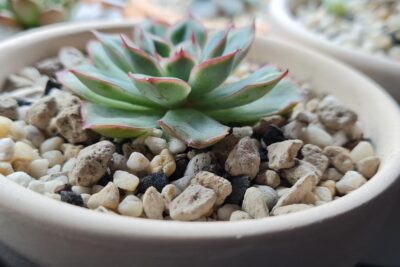
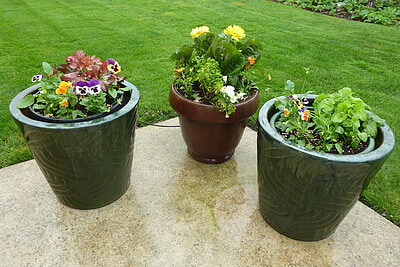


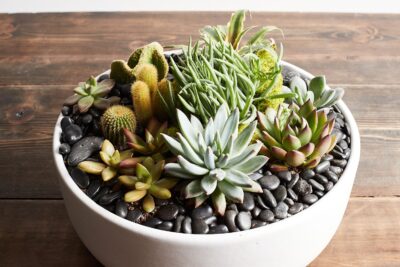
You Must Read